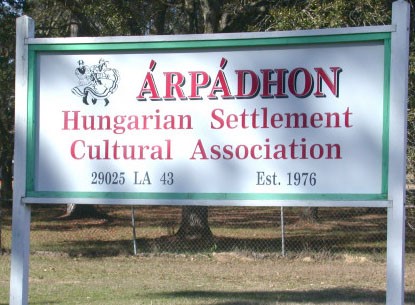In southeastern Louisiana, near the town of Albany, lies what was once known as “Arpadhon”. Three Hungarian settlers, Julius Bruskay, Adam Mocsary, and Theodore Zboray, arrived here and found the area quite favorable; aside from the warm climate and the chance to own land on credit, the Charles Brakenridge Lumber Company provided work for settlers in the area.
The three men began to vehemently campaign to convince more Hungarians to join them in Louisiana: they wrote letters to friends and family, travelled to northern Hungarian communities, and even received sponsorship from the Illinois Central Railroad to advertise the area in a Cleveland-based, Hungarian newspaper.
These efforts resulted in about 200 Hungarian families establishing themselves in the region, around 1500 individuals. Substantial protestant and catholic congregations spurred the construction of two Hungarian churches, respectively. After the mill closed its local plant, the Hungarians in the area turned to agriculture—focusing mainly on strawberry farming. By the 1930s and 40s the strong Hungarian culture and identity of the community began to erode and the population became near-fully Americanized.
In the 1970s however, a sense of cultural awareness was triggered throughout the US because of the bicentennial. As a reaction, some local Hungarian descendants formed the Arpadhon Hungarian Settlement Cultural Association. It still functions today, organizing a “Harvest Dance” every fall, with members from all over the region.


Published by